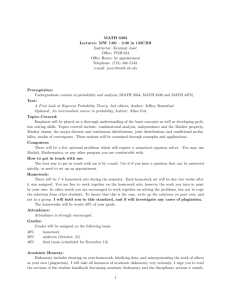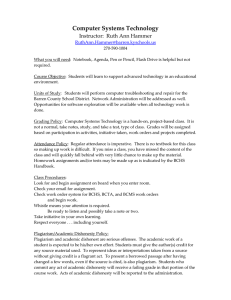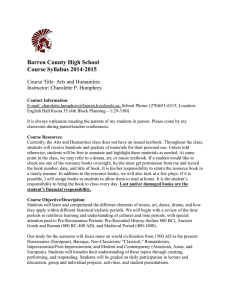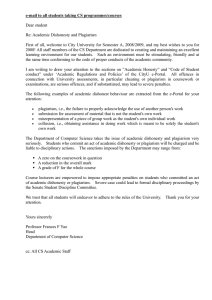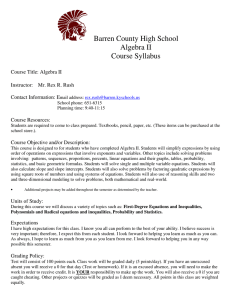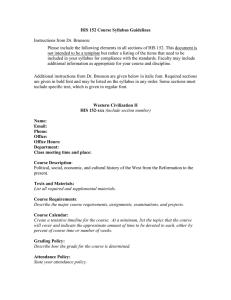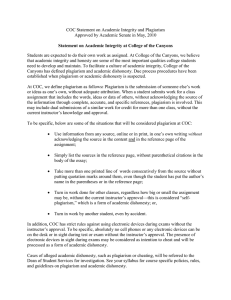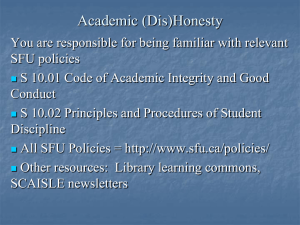American University Department of Computer Science College of Arts and Sciences
advertisement
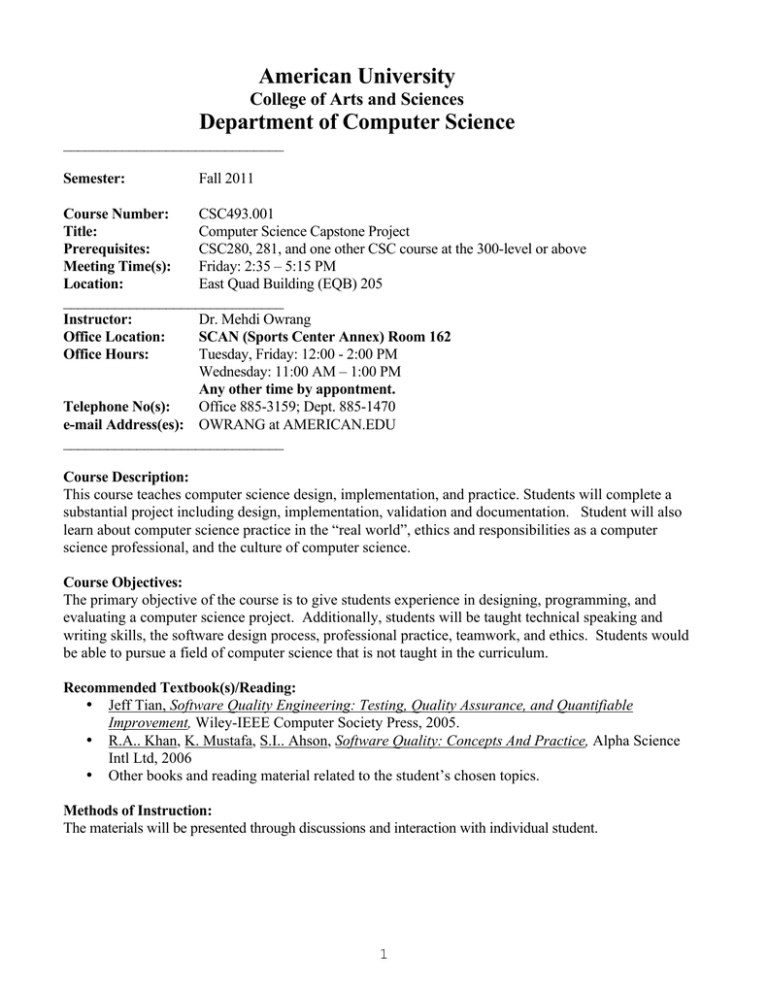
American University
College of Arts and Sciences
Department of Computer Science
______________________________
Semester:
Fall 2011
Course Number:
CSC493.001
Title:
Computer Science Capstone Project
Prerequisites:
CSC280, 281, and one other CSC course at the 300-level or above
Meeting Time(s):
Friday: 2:35 – 5:15 PM
Location:
East Quad Building (EQB) 205
______________________________
Instructor:
Dr. Mehdi Owrang
Office Location:
SCAN (Sports Center Annex) Room 162
Office Hours:
Tuesday, Friday: 12:00 - 2:00 PM
Wednesday: 11:00 AM – 1:00 PM
Any other time by appontment.
Telephone No(s):
Office 885-3159; Dept. 885-1470
e-mail Address(es): OWRANG at AMERICAN.EDU
______________________________
Course Description:
This course teaches computer science design, implementation, and practice. Students will complete a
substantial project including design, implementation, validation and documentation. Student will also
learn about computer science practice in the “real world”, ethics and responsibilities as a computer
science professional, and the culture of computer science.
Course Objectives:
The primary objective of the course is to give students experience in designing, programming, and
evaluating a computer science project. Additionally, students will be taught technical speaking and
writing skills, the software design process, professional practice, teamwork, and ethics. Students would
be able to pursue a field of computer science that is not taught in the curriculum.
Recommended Textbook(s)/Reading:
• Jeff Tian, Software Quality Engineering: Testing, Quality Assurance, and Quantifiable
Improvement, Wiley-IEEE Computer Society Press, 2005.
• R.A.. Khan, K. Mustafa, S.I.. Ahson, Software Quality: Concepts And Practice, Alpha Science
Intl Ltd, 2006
• Other books and reading material related to the student’s chosen topics.
Methods of Instruction:
The materials will be presented through discussions and interaction with individual student.
1
Grading Criteria/Course Requirements:
Project
Presentation of the project
: 75%
: 25%
Grading Scale listed below:
93-100
A
90-92
A87-89
B+
83-86
B
80-82
B77-79
C+
73-76
C
70-72
C60-69
D
0-59
F
Note: All written work should be prepared with a word processor (the AU laboratories have MS Word
available) and run though a spell-checker. Since all written material is also evaluated for grammar
and structure, students are advised to use one of the many grammar-checkers that are available (the
AU laboratories have several grammar checkers for student use).
Policies:
Class attendance is strongly recommended.
If you have difficulty doing your homeworks, please let me know so that I can help you. I will not
accept any late homework if you have not talked to me prior to the due date for the homework.
No Makeup exam(s) except for medical reasons.
Incomplete ('I') Policy:
The policy of the Computer Science Department, the College of Arts and Sciences, and the
University is that the grade of Incomplete (I) is rarely given. Department approval for a grade of I is
only granted in unusual, documented circumstances. A grade of I is not approved in instances where
students were unable to complete the course work.
Laboratory Hardware/Software Requirements:
Academic Integrity/Plagiarism:
$The Academic Integrity Code for the American University describes standards for academic
conduct, rights and responsibilities of members of the academic community, and procedures for
handling allegations of academic dishonesty. Academic dishonesty as defined by the Code includes,
but is not limited to: plagiarism, inappropriate collaboration, dishonesty in examinations (in-class or
take-home), dishonesty in papers, work done for one course and submitted to another, deliberate
falsification of data, interference with other students' work, and copyright violations (including both
document and software copyrights). Copies of the Academic Integrity Code are available from the
Office of the University Registrar.
$Plagiarism is defined as taking the language, ideas, or thoughts of another, and representing them as
your own. If you use someone's ideas, cite them; if you use someone's words, clearly mark them as a
2
quotation. Plagiarism includes using another's computer programs or pieces of a program. Consult
one of the many "writer's guides" that are available in the library and bookstores for citation practices.
All instances of plagiarism will be reported to the Dean of the College of Arts and Sciences for
appropriate action.
Supplemental References:
The Project:
A design project will comprise most of the work and grade in this course. A project could be a
programming project or a research-oriented project with some experiments/simulations, approved by the
faculty advisor.
Faculty Advisors:
Professor Alan Ford:
Professor Michael Black:
Professor Mehdi Owrang
amford@american.edu
mblack@american.edu
owrang@american.edu
Some suggested sample designs are defined in the following.
Some project examples:
• Design a simple programming language and write a compiler for the language
• Design the image recognition and control for a small autonomous vehicle, propose
• Design and implement a playable computer game
• Design and construct a file system
• Design a construct a simple operating system
• Web-based applications
• Research designs and experiments
Students may also, with instructor approval, devise their own projects.
Design statement
In the third week, students should submit a memo detailing their design objectives. This statement should
include:
A detailed proposal of what the student expects to accomplish by the end of the semester.
A week-by-week timeline showing the plan to accomplish and by when.
Midsemester Progress Report
On the 5th and 10th weeks of the course, students will be required to give a brief (5-10 minute)
presentation. This presentation should cover the progress made to date, as well as any changes in the
timeline or expected final outcome. The presentation should be accompanied by a demonstration of the
project work to-date.
Final Presentation and Report
By the last class of the semester, students must submit their final reports in prints. This should be a
3
thorough report that includes the following:
A description of what have been accomplished, including any design goals not met or any
additional work
A technical description of how the project works
A discussion of what have been learned in completing the project.
A complete bibliography, citing all references and materials used
The program code comprising your project, including detailed instructions on how to compile and
evaluate it, should be submitted on a CD accompanying the report.
In the last week of the semester, the students will be required to make a 20-minute long presentation of
the project. This presentation should be accompanied by a demonstration of the final result.
4

